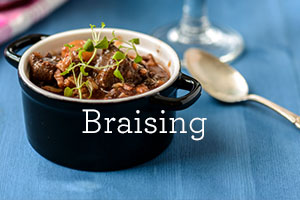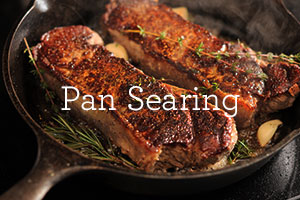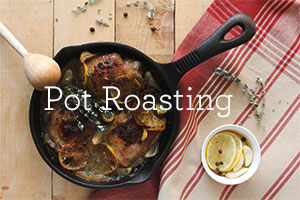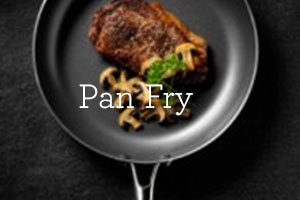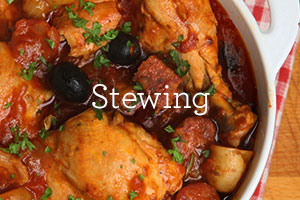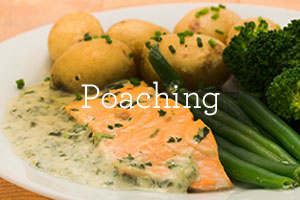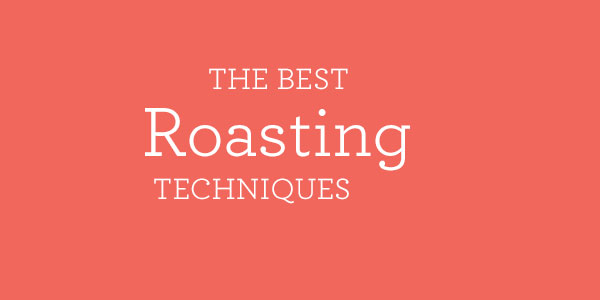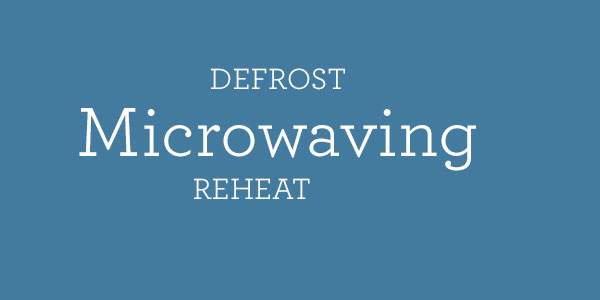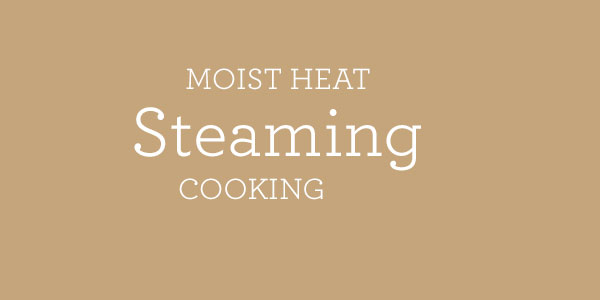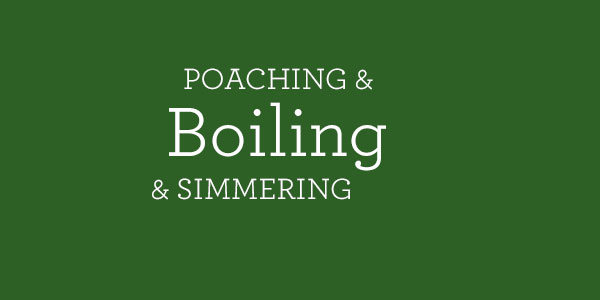Nutrition > Cooking Methods
|
|
Cooking MethodsThe best beef and lamb meat cuts should be cooked using the most suited cooking method. Learn cooking techniques straight from meat experts with years of our New Zealand meat experience.
|
Degree of doneness |
Internal core temperature (+ or - 2°C) (+ or - 4°F) |
Internal description | Approximate oven roasting times @ 160°C-180°C (320°F-356°F) for primals | Touch test descriptions for grills and pan-seared cuts |
| Very rare | 40°C - 45°C (104°F - 113°F) | Internal deep red colour, very moist with warm juices, red colour | 18-20 minutes per 500g (1.1lb) Plus 10 -15 mins resting | Very soft to touch |
| Rare | 45°C - 50°C (113°F - 122°F) | Internal very red colour, very moist with warmer juices, quite red in colour | 20 - 25 minutes per 500g (1.1lb) Plus 10 -15 mins resting | Soft to touch |
| Medium rare | 55°C - 60°C (113°F - 122°F) | Internal lighter red colour, moist with pink, warm juices | 25 - 30minutes per 500g (1.1lb) Plus 10 -15 mins resting | Soft and springy to touch |
| Medium | 60°C - 65°C (140°F - 149°F) | Internal pink red colour, moist with clear pink juices | 30 - 35 minutes per 500g (1.1lb) Plus 10 -15 mins resting | Firm and spongy |
| Well done | 70°C - 75°C (158°F - 167°F) | Internal light grey colour, a little moist with clear or no pink juices | 30 - 40 minutes per 500g (1.1lb) Plus 10 -15 mins resting | Firm to touch |
| Very well done | 75°C - 80°C (167°F - 176°F) | Internal stone grey colour, dry with clear or no sign of juices | 40 - 45 minutes per 500g (1.1lb) Plus 10 -15 mins resting | Very firm to touch |
When is your roast ready?
• The perfect rare, juicy roast of beef. What is the chef's secret for success? The answer: knowing the correct degree of doneness. The degree of doneness of both large and small meat cuts is always measured at the very centre of the cut. The following methods will determine the degree of doneness:Use a meat thermometer - You can place the thermometer in a large cut of meat before roasting. Insert it into the thickest part, away from fat or bone. Take a medium-rare beef eye of striploin for example: you can be sure it is done when the internal core temperature has reached approximately 60 deg C (140 deg F).
Press meat with tongs - Lightly press the outside centre or thickest part of the meat. Rare meat gives under pressure, is soft and springy. Medium is slightly firmer. Well done is firm. You will learn to judge doneness by experience. When calculating temperature/ timing ratios, remember to take thickness of the meat into consideration. Teach yourself to judge doneness by sight, smell and feel.
A final test - If you are still unsure, as a last resort, test for colour of meat juices. Pierce meat in the thickest part using a fine metal skewer. See above chart for colour of meat juices.
Remember that the internal temperature will continue to rise after the meat is removed from the oven or pan, and for a time during resting. This transference of heat can change the internal temperature of a small joint by 2-4 deg C after 5 to 10 minutes. And in larger joints, the internal core temperature can rise from 4-10 deg C after 15 to 20 minutes.
Therefore, allowing for this "carry-over" cooking, roast meatcan be cooked to about 5deg C below the desired degree of doneness.
Microwave
Microwave cooking can be used for cooking or reheating meat.Microwave ovens come in various sizes with different levels of power and choice of functions, e.g. defrost, browning, reheating. Combination convection and microwave ovens combine dry heat or steam with the addition of microwave energy.
Microwave cooking is quick, convenient, safe and economical. The microwave is useful for quickly defrosting meat and for reheating prepared meat dishes.
Steaming
Steaming is a moist heat cooking process. The meat does not come into contact with the cooking liquid but instead is cooked by surrounding steam, sometimes under pressure. Steaming results in tender, well flavoured, juicy meat with minimum weight loss or shrinkage. Steaming under pressure is fast and easy, saves on energy and provides accurate meat portioning and cost control.Various steaming methods:
Atmosphere steaming - meat cooked directly or indirectly with steam in the following ways:Directly in a steamer. Steam is generated within the steaming chambers and is fed into the chambers from a separate boiler.
Indirectly or in covered pan. Sealed containers of food are placed over or in a deep pan of boiling water. Perforated trays or vessels can be used but this method requires pans or containers with tight fitting lids to contain steam.
High pressure steaming
Using purpose-built steamers, which generate high pressure steam for ultra quick cooking. Mainly used for vegetables and processed meat products.
Combination and steam oven cooking
High capacity steamer ovens can cook by steam, using moist heat or dry heat, or a combination of both.
Vacuum cooking by steam (sous-vide)
Used to cook food in vacuum-sealed plastic pouches, by combination of steam and convection oven, between 70 to 100°C (158 to 212°F).
Low to moderate temperature steaming
Modern equipment makes it possible to cook meat between between 70 to 100°C (158 to 212°F). This method is ideal for steam blanching, preserving, steam cooking, cooking in vacuum (sous-vide), thawing, reconstituting and reheating meat dishes.
Steam and smoke oven
The oven allows cold and hot smoking of cured meats and smallgoods, and provides a steam-cooking cycle. The unit operates with fan-forced smoke from burning wood sawdust, by gas or electric burner.
Tips on steaming
Use a tight fitting lid or have steamer door securely closed to retain heat and moisture. If food is cooked in basins or moulds, grease these well and firmly cover with grease-proof kitchen paper, cloth or foil to prevent sticking, or moisture penetrating food. Steaming is practical for thawing and quickly reheating prepared foods.
Beef cuts (and offal) suitable for steaming
Tongues, veal brains, kidney, heart, beef cheek, papillae off, tripe, beef forequarter cuts.Lamb cuts (and offal) suitable for steaming
Tongues, brains, sweetbreads, kidney, heart, tripe, forequarter cuts.The more tender beef and lamb loin and leg cuts are also suitable for steaming and combination steaming.
Poaching and Simmering (Boiling)
Poaching and simmering are very similar methods.
Poaching
Poaching is a very gentle, moist heat method of cooking using a minimum amount of reduced liquid or stock that is kept at just below simmering point, approximately between 90 to 94°C (194 to 201°F). Poaching liquid should show very little movement - a mere "murmur" or shimmer at the surface, with no sign of bubbles bursting.Poaching Methods
Poaching can be done in a pan, on the stove, in a bratt pan or in a covered dish in the oven at between 160 to 180°C (320 to 360°F). Poaching temperatures are lower than those used for simmering, and poaching times are shorter. Tender cuts with lower amounts of connective tissue are best, for poaching.Simmering
Simmering is a slow, gentle, moist method of cooking in liquid or stock, usually in a deeper pan than that used for poaching. Liquid is heated to just below boiling point, approximately 95 to 99°C (203 to 210°F) - higher than that used for poaching, with slightly more movement in the cooking liquid; tiny bubbles rising slowly to the surface and only occasionally bursting. This is much less movement than when boiling. Simmering can be done in a deep pan, stock pot on the stove, kettle, bratt pan or in a combination oven.Simmering is best for cuts with higher amounts of connective tissue which need long, slow cooking to tenderise them. But this method can also be used for more tender cuts, e.g. beef rump cooked medium-rare to medium degree of doneness.
Tips for poaching and simmering
Cook gently for most tender results.Arrange beef or lamb cuts in a single layer in the poaching, simmering pan, to ensure even cooking.
Use a rich stock when poaching for a short time, as brief cooking does not allow rich, strong flavours to develop in the pan.
A well flavoured poaching or simmering liquid can be used in sauces to accompany the meat.
Pre-soaking and blanching: Some salted beef and lamb products may be soaked in cold water to extract some salt prior to cooking. To blanch salted or pickled meat start it off in cold water, then bring to the boil, simmer and refresh under cold running water. After refreshing, simmer blanched meat in stock or liquid until cooked.
Beef cuts (and offal) suitable for simmering
Shin, topside, thick flank, silverside (fresh or corned), flank steak, brisket, chuck, blade, mince, veal brains and sweetbreads, tongue, beef heart, tripe.Lamb cuts (and offal) suitable for simmering
Lamb leg cuts, breast and flap, shoulder and neck chops, shank, lamb tongue, brains, heart, tripe, sweetbreads.Stewing
In stewing, meat cut into smaller pieces or cubes is cooked gently in liquid to completely cover it, and the vegetables are included. A stew can be simmered in a pot on the stove top or cooked in a covered casserole in the oven. Stewing is suitable for the least tender cuts of meat that become tender and juicy with the slow moist heat method. Cuts having a certain amount of marbling and gelatinous connective tissue give moist, juicy stews.
When stewing lean meat, even though it is surrounded by liquid, it can become dry in texture if cooked at too high a temperature for too long. While prolonged simmering or cooking close to the boil is necessary to soften connective tissue and make tough meat tender, it also dries lean meat out. (As the meat is heated the muscles coagulate, proteins shrink and water is squeezed out. Cooking meat in liquid does not stop this water loss). After initial browning, a low temperature or sub-simmer gives best results.
Do not overcook lean meat stews.
The meat for a stew is usually browned before the liquid is added. This develops colour and flavour. Some meat stews are made without initial browning, relying on added ingredients for depth of colour. In some stews only the vegetables get an initial browning, and then meat and liquids are added. For example, a meat curry is often made this way.
White Stews
Known as blanquettes fricassees, white stews are made with lamb or veal that is blanched, or lightly seared without colouring, and cooked in stock.To blanch
Cover meat with cold water and bring to the boil, then drain and refresh under cold running water. The sauce is then made with the liquid and finished with a liaison of egg yolks and cream.
Brown Stews
Brown stews are made with pieces of red meat that are first seared or browned. A browned mirepoix (and sometimes browned flour), plus liquids such as stock and wine are added, and the dish simmered gently until tender.Thickening Stews
- The cooking liquid may be drained from the cooked meat at the end of cooking and thickened by reduction, but stews are more often thickened in one of the following ways:
- Coating pieces of meat with flour before searing. This contributes to thickening of liquid as the stew cooks.
- A roux is used, or beurre manie (uncooked flour and butter paste) added.
- A starch such as cornflour with cold water may be stirred into the hot liquid towards the end of cooking.
Beef cuts for stewing
Chuck steak, blade steak, topside steak, silverside steak, shin steak, flank steak, thick skirt steakOx kidney, ox tail, ox heart, ox liver, ox heart, ox liver
Gravy beef, tripe, minced beef
Lamb cuts for stewing
- Forequarter (boned, diced), round neck chops, shoulder chops, leg chops, shank (knuckle), minced lamb, kidneys, liver, heart.

Information supplied by the New Zealand Beef and Lamb Marketing Bureau.
HAPPY CUSTOMERS
"Just wanted to let you know that you folks have allowed my husband and I to send my Daughter and Son-in-Law the perfect gifts. We live in the US and they live in Auckland! It's very difficult, being so far away, to know what they might need and sending things they want can be as expensive to mail as to acquire! But everyone looks forward to having such wonderful high quality meats your company provides! Thank you so much for your terrific quality products and outstanding service!"
Brian and Kathy Ward
Hi team, just wanted to say a big thank you for your amazing service. I needed to cater for a dinner party and fell upon your website after searching “Gourmet Meat”. I live in Whangarei and thought I would purchase a few different items to try and test your service before placing a large order for our party. I was so impressed at how efficient your service was. I ordered my meat online one day, and it was couriered from Akld to Whg the next day. The meat arrived all professionally packaged and in excellent condition with freeze packs included in the box to keep the meat cool. The meat itself is to die for!!!!! Everything is as described on your website. The price is deserving of the meat provided and very affordable, your meat is extremely superior to that offered in other butchery’s and supermarkets and more importantly is very flavoursome! We will be ordering all our meat online from hereon in. Thanks team.
Les
"Just a quick note to say thank you! Our friend was most impressed with the package we had you send for his birthday. Many thanks for the excellent service."
Eloise & Lance Barnes
"I am just writing to in say how much I and my family enjoyed the Rolled Boned Pork which we picked up for Christmas Dinner. There was a beautiful covering of fat which was fantastic for crackling. The meat was moist and soft.
We all agreed that it was one of the best pieces of pork that we had in a long time."
Karen Staples
"I live in Sydney and thought I'd try your online shopping service.My family were both surprised and impressed by the quality of the meats and the speedy fast delivery service.I myself am very happy with the fact that you offer this service online and that I could present my family with a great gift from the heart to nourish the soul and fill their bellies during the festive season.
Again, I thank you and will be recommending your online shopping service to my friends and family here in Australia. Until my next purchase. Keep up the good work! Happy prosperous new year!"
Julie
Read more happy customers



